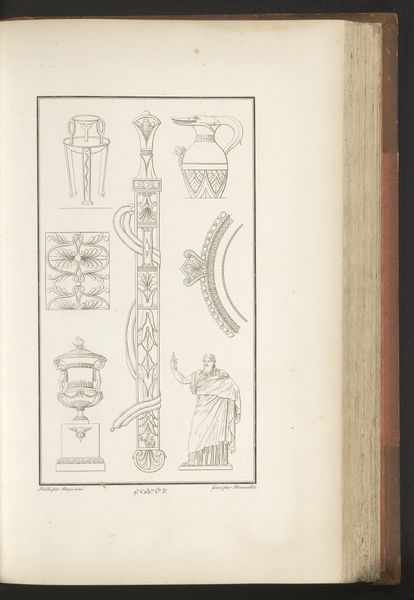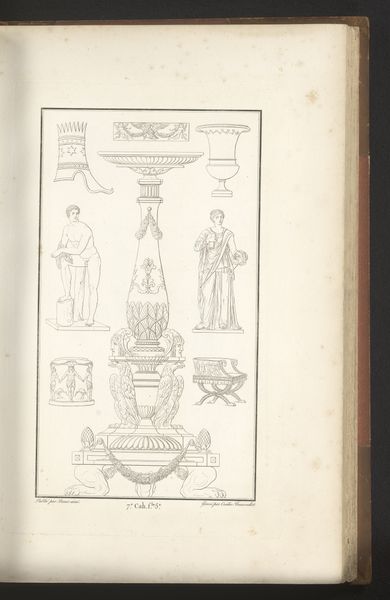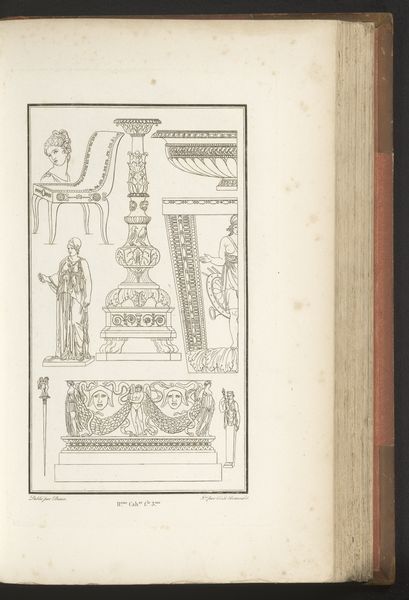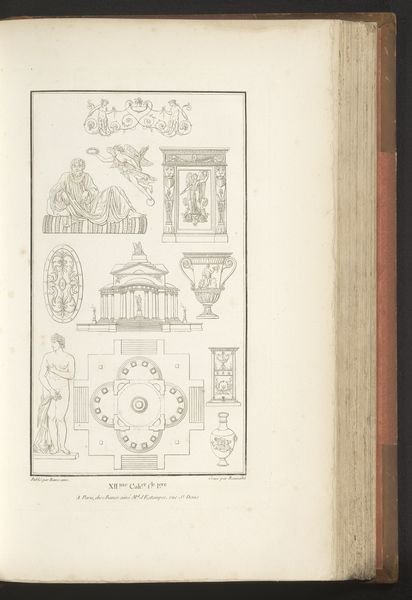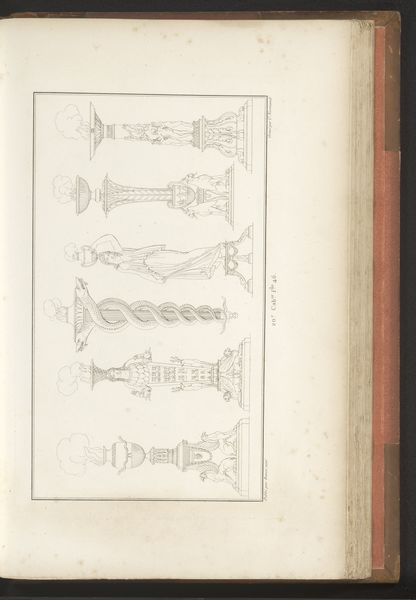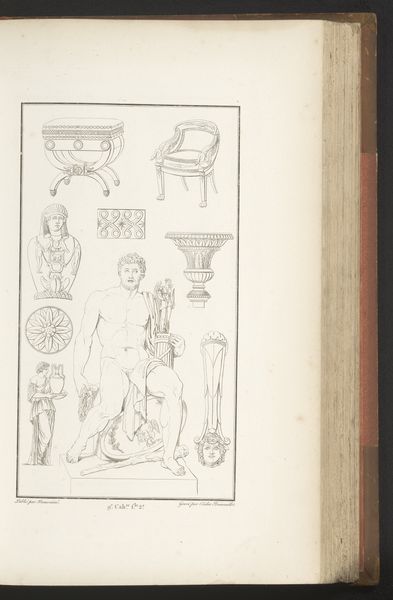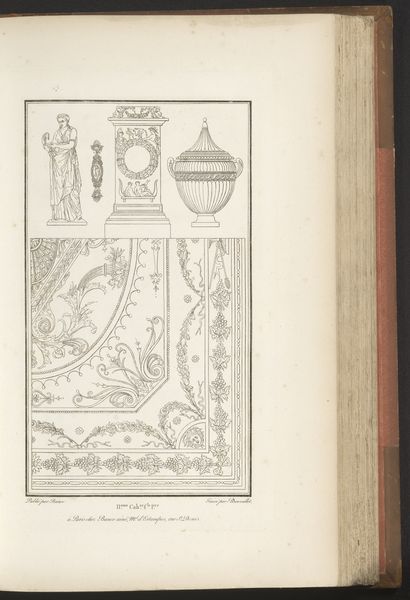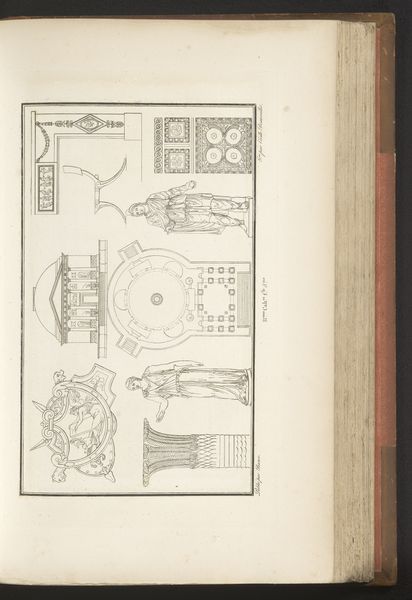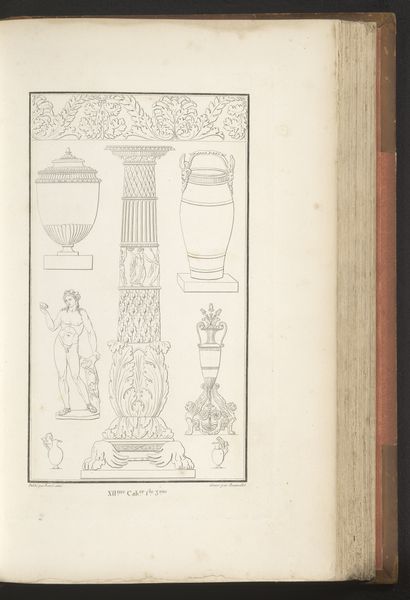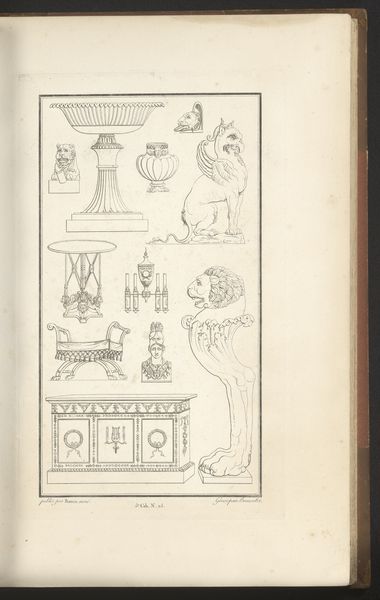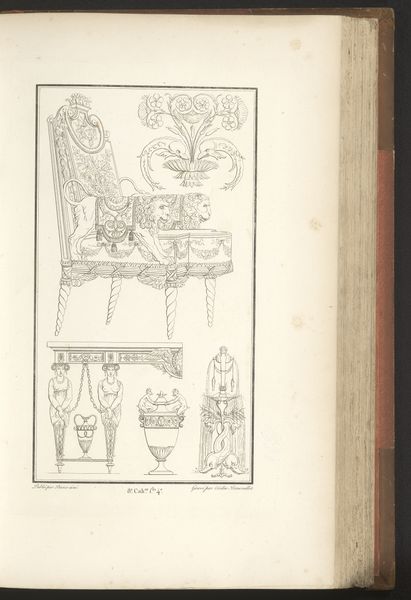
drawing, paper, ink
#
drawing
#
neoclacissism
#
classical-realism
#
figuration
#
paper
#
ink
Dimensions: height mm, width mm
Copyright: Rijks Museum: Open Domain
Curator: Oh, hello. What do you see when you look at this intriguing composition of drawings? For me, it feels like stepping into a hushed room filled with possibilities, architectural fantasies, maybe even theatrical stage props. Editor: It does give off that aura. But something feels stark about the arrangement. Seeing all these isolated design elements stripped bare like this feels...well, strangely clinical and detached, though also inherently political, and revealing a very deliberate point of view. Curator: Interesting! The artwork we're discussing today is entitled “Diverse ornamenten,” from 1820, created by Cécile Beauvallet. It's a drawing made with ink on paper. I must admit I'm captured by the beauty, especially the way each object seems suspended in its own space. There is almost something precious about their fragility. Editor: Precisely! They're orphaned objects, divorced from any grounding context, from people, their own history or a physical place, but also symbols that represented exclusive circles in the 1820s and coded knowledge. These "ornaments" reflect a cultural ideal that's both elevated and exclusionary and reveal social stratification. The artist has a strong message on the table. Curator: I do understand what you say, but aren't we reading into it a bit? Couldn't it simply be the artist making records and studies? Or perhaps, playing a clever game of composition, where each element speaks quietly, creating echoes? Editor: I think not. These are classical forms that held powerful social weight at the time. But you are correct, though: look how delicately the figures are drawn and placed—the crosshatching and use of negative space feels revolutionary for such rigid classical forms! Curator: It makes you wonder. Was Beauvallet celebrating classical tradition or subverting it? Perhaps a bit of both? This piece challenges us to look beneath the surface of even the most seemingly innocuous designs. Editor: And question what the value of that design meant for the populations these were often stolen from to begin with. Now THAT, I would want to think more about... Thank you for making me question what ornaments can symbolize when dislocated in such way.
Comments
No comments
Be the first to comment and join the conversation on the ultimate creative platform.
